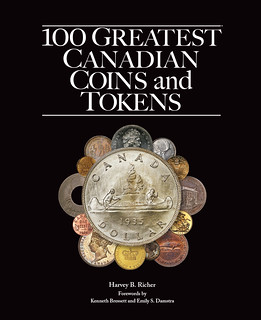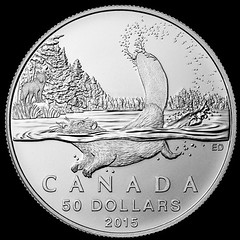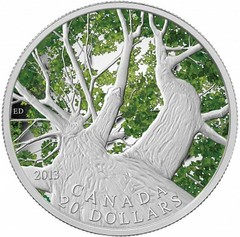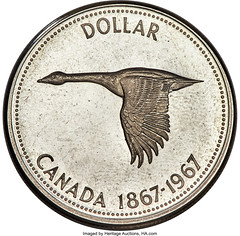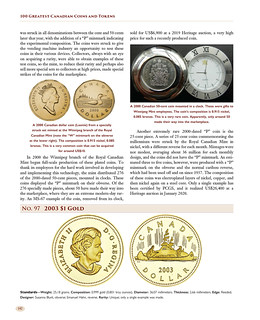
PREV ARTICLE
NEXT ARTICLE
FULL ISSUE
PREV FULL ISSUE
V25 2022 INDEX E-SYLUM ARCHIVE BOOK REVIEW: 100 GREATEST CANADIAN COINSCoin designer Emily Damstra reviews the new book 100 Greatest Canadian Coins and Tokens by Harvey Richer. -Editor Emily S. Damstra and the 100 Greatest Canadian Coins and Tokens
Damstra is a natural-science illustrator, nature artist, and coin and medal designer. Through her work, she explores many aspects of nature, science, and culture, from Paleozoic seas to modern life. Her illustrations appear in numerous publications, on interpretive signs in museums and natural areas, and occasionally in our pocket change. As of this writing, she's created more than 40 designs for the Royal Canadian Mint and nearly two dozen coin and medal designs for the United States Mint. Outside of work, she is often found in the yard, engaged in a perpetual campaign to oust the invasive species from her native-plant garden. A few years ago I had the opportunity to visit the Bank of Canada Museum in Ottawa. Several items piqued my interest, one of which was the gift shop's $9.50 collection of wildlife coins from around the world. I'm pretty sure the package, boldly titled REAL COINS, was intended for a much younger audience, but I was curious and bought it on a whim. As a natural-science illustrator, I can't help but notice and contemplate the ways that nature is depicted in popular culture, including on coins, and as a coin designer I like to consider how coin designs reflect the values of a nation. For those reasons, I wondered if this package of animal coins might give me some food for thought.
The In 100 Greatest Canadian Coins and Tokens—a wonderful book—Dr. Harvey Richer deepened my knowledge about some of these beloved Canadian animal coins and broadened my knowledge about many other Canadian coins and tokens. In some of the early examples he discusses, we see nature depicted as a secondary element surrounding text (for example, the maple leaves and seeds on the Province of Canada 1858 pattern cent reverse) or chosen for its value as a resource (such as the seal and the filleted cod on the Magdalen Island 1815 penny token). Sometimes the subject depicted is from the settlers' original homeland rather than native to what is now Canada (such as 1823 and 1832 Nova Scotia half-penny and penny thistle tokens).
There are also great stories about Canadian coins, such as how an unsatisfactory design contributed to Canada's lack of a $2.50 gold coin, and why the nickels produced in 1942 had 12 sides. I was surprised to learn that events on the other side of the world affected the details of a Canadian coin's design and its rarity (see chapter 8). Fortunately for us readers, Richer is not shy about peppering his tales with fascinating bits of background information. In his new book, we learn how long a cord of wood might last as the primary source of heating in the middle of the eighteenth century in New France (chapter 1), and where on this planet are the three largest meteoric impact craters (chapter 8). As every coin collector understands, a great way to explore a nation's history is through its numismatic legacy, and Harvey Richer's thoughtfully guided tour of the 100 greatest Canadian coins and tokens is a marvelous journey.
# # #
100 Greatest Canadian Coins and Tokens
To read the earlier E-Sylum article, see:
Wayne Homren, Editor The Numismatic Bibliomania Society is a non-profit organization promoting numismatic literature. See our web site at coinbooks.org. To submit items for publication in The E-Sylum, write to the Editor at this address: whomren@gmail.com To subscribe go to: https://my.binhost.com/lists/listinfo/esylum All Rights Reserved. NBS Home Page Contact the NBS webmaster 
|
